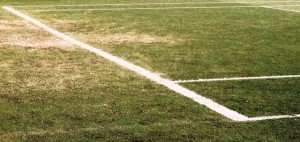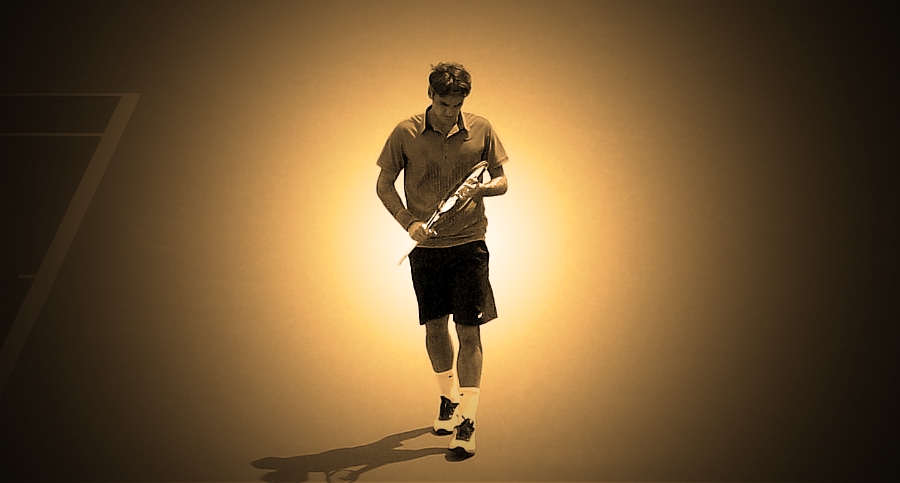 One of the many surprises during Wimbledon’s first week was the defeat of the defending champion Roger Federer at the hands of the Ukrainian Sergiy Stakhovsky. The 116-ranked Stakhovsky, who has never before reached third round at Wimbledon in his career, ended perhaps the most impressive record in tennis, Federer’s streak of getting to the quarterfinals or better, 36 Slams in succession. While millions around the world viewed this match, very few of them knew that the two players have been involved in a major battle that lasted over 15 months on a different platform – and this time not as adversaries but rather side by side – one that will prove to be much more important for the development of the sport than their 4-set encounter on that Thursday afternoon. Before I explain further, let me start with a simple example: if a guy like Lukasz Kubot, ranked 130 in the world and no appearance in the second week of a Slam tournament in his 11-year career, is able to make more money (around $310,000) by reaching the quarterfinals in Wimbledon than he has made during the six previous months of 2013 up to that point, it’s largely thanks to Federer and Stakhovsky, along with a few other select individuals.
One of the many surprises during Wimbledon’s first week was the defeat of the defending champion Roger Federer at the hands of the Ukrainian Sergiy Stakhovsky. The 116-ranked Stakhovsky, who has never before reached third round at Wimbledon in his career, ended perhaps the most impressive record in tennis, Federer’s streak of getting to the quarterfinals or better, 36 Slams in succession. While millions around the world viewed this match, very few of them knew that the two players have been involved in a major battle that lasted over 15 months on a different platform – and this time not as adversaries but rather side by side – one that will prove to be much more important for the development of the sport than their 4-set encounter on that Thursday afternoon. Before I explain further, let me start with a simple example: if a guy like Lukasz Kubot, ranked 130 in the world and no appearance in the second week of a Slam tournament in his 11-year career, is able to make more money (around $310,000) by reaching the quarterfinals in Wimbledon than he has made during the six previous months of 2013 up to that point, it’s largely thanks to Federer and Stakhovsky, along with a few other select individuals.
Both players are members of the ATP Player’s Council and have actively pursued for higher prize money distribution to players in the Slam tournaments. Although the Council did not obtain from the negotiations exactly what it was initially seeking (who does in negotiations?), there is no doubt that it came out as the winning side; and their biggest victory came at Wimbledon. Increasing a tournament’s prize money is nothing new in tennis, but the distribution pattern of this particular increase is unprecedented.
In a competitive environment, one of the concrete rules is that if the aim is for those few who rise up above the rest of the competition pool to provide top-quality goods and/or services, one must first and foremost make sure that so-called ‘competition pool’ has high standard of quality. It is precisely in this sense that the 2013 Wimbledon prize money increase excels beyond all the others in the past. In tennis, the quality of the tennis played by the highly-ranked players depends very much on the “push” initiated by the 100 to 150 players ranked below them. Thus, the example of Kubot proves how essential a role the prize money increase in Wimbledon plays to those players ranked below the top 10 that have often been forgotten in the previous negotiations of this type. But let’s leave the quarterfinals aside and go further back to the first rounds.
By reaching the third round of Wimbledon, Stakhovsky pocketed approximately $95,000 which exceeds half of his earnings prior to Wimbledon in all of 2013! Take a guess how much he would have earned for the same outcome had the prize money structure remained the same as last year: around $58,600! Now, try to imagine the extra bit of motivation that the extra $36,400 in prize money signifies to a player who has been journeying in the 50 to 150 range in the ATP rankings. In fact, we don’t even have to imagine: let’s revisit Stakhovsky’s comments on the issue, three days before Wimbledon began, in other words, at a time where he couldn’t maybe even dream of beating Federer and reaching the third round in the All England Lawn Tennis and Croquet Club. As a member of the ATP Player’s Council, when asked about some of the criticism directed at the $35,440 prize money offered to the first round loser at this year’s Wimbledon, Stakhovsky poetically struck back. He said that the top-10 players already benefit from exclusive sponsor contracts and added that “the rest of the top 100 guys don’t have the lifestyle of superstars. They have the life of humans.” He also said in an interview with a Ukrainian sports writer back in 2012 that he came out in the red from his trip to the Indian Wells and the Miami Masters Series tournaments, even though he made the second round in the first tournament and made around $20,000 in prize money from the two tournaments combined. Once again, he contrasted the top players and the rest of the guys: “Federer, Nadal, Djokovic, Murray – that’s simply another world. We simply don’t exist in comparison with them.” For Stakhovsky, the image that the general public has about tennis players “making big money” was nothing more than an “illusion”. Stakhovsky’s comments clearly show what this current prize money increase in the Slams, and especially at Wimbledon, mean to the lower-ranked players.
Yet, it seems that the historical significance of this increase will only be understood in the future, when one takes a retroactive look back at the sport. Many will agree that, for a few years and running, men’s tennis has been going through a period of success in popularity, first one of this magnitude since its golden age during the years of the Borg – McEnroe – Connors rivalries and others surrounding them. It would be very tempting for the leading figures of the sport to sit back and collect the fruits of this kind of productive period. However, this current period led by Novak Djokovic, Rafael Nadal, Federer, and Andy Murray is likely to reach its conclusion in the next few years, if not in less time. From that perspective, the effort of the ATP Player’s Council having the vision to safeguard the future of the sport, and to diminish the chances of a potentially-somber period, by protecting the interests of the larger pool of lower-ranked players before all else, is to be applauded.
There is one extra factor that most people forget, one that did not escape Darren Cahill, the ESPN analyst, ex-professional player and a successful coach on the tour. He insisted on TV during the second week of broadcasting that the top 4 superstar players on the tour, Nadal, Federer, Djokovic, and Murray, have all played significant roles in the success of the negotiations by either using their influence within the ATP Council (such as Federer, and Nadal until 2012), or clearly voicing their support for the increase from the outside in the case of Djokovic and Murray. In other words, the top 4 put aside their own interests and cared for the progress of the sport by supporting an increase in prize money that favors the lower-ranked players more than themselves – Jimmy Connors who consistently demanded more for himself and the top few while he was at the top of the game, and who at times claimed to never even having heard of some of the players outside the top 30, comes to mind.
Exactly one century ago, the New Zealander Anthony Wilding won his fourth Wimbledon title in a row. What only a few people know about “Captain Wilding” is that during the two years prior to his title in 1913, he was a loud voice taking a position on two sensitive issues that did not necessarily benefit him, but were bound to make the sport better. The first one involved the removal of the Challenge round system that was in place back in those days. For those who may not know it, back in the days, the players participated in a draw called the “All Comers”, and the winner of the draw would then play a one-match Challenge round against the previous year’s title holder, the winner crowned as the Wimbledon champion. Wilding won Wimbledon for the first time in 1910, earning his title through the All Comers draw and winning the Challenge match against the 1909 title-holder Arthur Gore. In 1911, he sat and watched as all other players battled through the All Comers draw. The British player Herbert Roper-Barrett won the All Comers draw after a fierce 5-set battle against his compatriot Charles Dixon, coming back from two sets and 3/4 down in the third set. When the 38-year-old Roper-Barrett had to play the Challenge match against Wilding the next day, with the temperature reaching 31 degrees in the shade, and the match extended to a fifth set, an exhausted Roper-Barrett could no longer play and retired at the end of the fourth set. Wilding then began a loud campaign in favor of eliminating the Challenge system and giving every player an equal chance at winning the title by going through full draw, even though he was the one clearly benefiting from the existing system! The second one concerned a concept that was foreign back then, but one that has become second-nature today: the seeding system. Wilding, also writing articles for tennis publications in his home country and abroad (a common practice for players back then to add an extra source of income), continuously raised the issue of placing the best players in the draw to avoid early round match-ups between them, thus raising the level of play as the tournament progressed and diminishing the chances of a quick final rounds where one player outmatched the other.
His first wish came true in 1922, 4 Wimbledons after he played his last final in 1914 (the tournament was not held during the World War I years), and the second one came to fruition in 1927, when the “crocodile” René Lacoste and “Big” Bill Tilden were seeded one and two respectively, along with six other players. Unfortunately, Wilding never had a chance to see the positive results of either campaign that he pioneered in their beginnings. On the advice of the Duke of Westminster, and discussions with the then First Lord of the Admiralty Winston Churchill, Wilding joined the Naval Brigade branch of the British Forces later in 1914, and he was killed during a battle in France, in May of 1915, less than a year after playing his last Wimbledon final.
A century goes by, the technology advances, new rackets come and go, courts get renewed, facilities improve, rules change, and tennis progresses. During the 100 years, many champions lifted trophies. But not all of them were necessarily pioneers of the game. In this state of continuous flux, there are still some “constants”. One of those constants is the on-and-off appearance of personages who go beyond their “champion” status to pave the way for the progress of men’s tennis. It seems that few champions such as Wilding, and the top 4 players a century later, manifest that character by putting the interest of others and the sport ahead of their own. And for players such as Stakhovsky and Kubot, and a few hundred others, this “constant” definitely serves its purpose.

